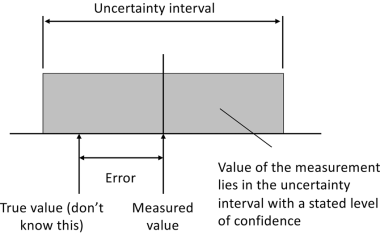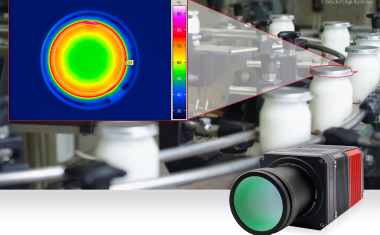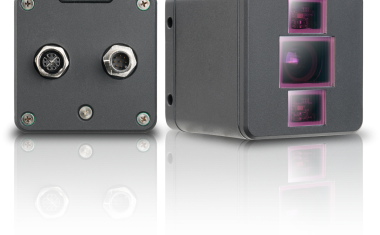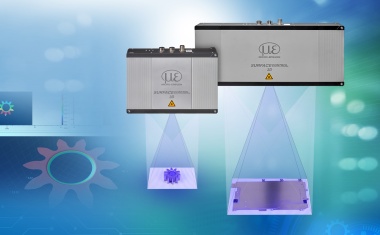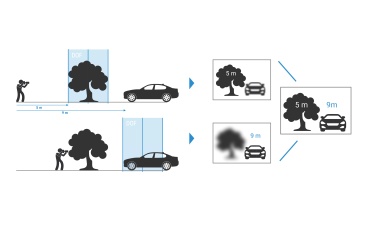Clear line
Railway lines have to be regularly inspected in order to detect and remedy faults. There are various methods for inspecting rails. A combination of ultrasonic diagnosis and visual inspection is particularly effective. In a modern inspection system, Basler-Scout GigE surface cameras undertake the visual part of the rail inspection and the depiction of defects.
Regular rail inspections are essential for railway safety. From the wide range of inspection methods which are now available to railway companies, ultrasonic examination is especially attractive. It is non-destructive, non-contact, cheap, relatively simple to perform and very precise. In ultrasonic examination, an ultrasonic probe sends out bursts of sound waves beyond the range of human hearing, with frequencies of between 1 and 10 MHz. These waves penetrate deep into the material of the rail. Within the rail, each irregularity reflects the sound waves back to the probe. The reflected sound which is received by the probe is the echo. Its time of arrival provides a measure of the distance between the probe and the irregularity. Normally, an echo is caused by the outer surfaces of the rail. However, if the echo arrives later than that from the front surface and earlier than that from the rear surface, this indicates a weak point in the rail.
Simple automation of the method
The ultrasonic method is easy to automate. Normally, a combination of probes is used, which emit the waves from various angles. The sequence of transmission and reception of the ultrasonic waves is repeated cyclically along the sections of the rail. The measuring equipment is installed in a special ultrasonic diagnosis carriage, which travels along the rails at high speed and performs the measurement cycles with a repetition rate of several kHz.
The automated system produces more meaningful results if it is combined with a further inspection method: with visual inspection using a digital camera.
The interpretation of the results of the ultrasonic examination is made easier if each strongly recorded echo is evaluated with the aid of an image of the rail, which is synchronised with the ultrasonic signals.
Mechanical demands on the railway carriage
The production of a high-performance diagnostic railway carriage is a sophisticated technical challenge. During the visual inspection, this carriage achieves a speed of about 60 km/h. The field of view must typically be set to 0.5 m in order to achieve a correct image with a resolution of 1 mm. Surface cameras are used due to the severe vibrations which occur during travel. A very short exposure time is required to handle the linear movement blur. The rated value of 60 km/h corresponds to about 17 mm per millisecond. To achieve the target resolution of 1 m, the exposure time must be limited to about 50 µs. At the same time, the image recording must not depend on external lighting conditions. Diagnostic railway carriages are used day and night and in all conceivable weather conditions. Under these conditions, the only practicable possibility is to illuminate the scene with the required high intensity of a discharge lamp, e.g. a xenon flash lamp. This must be precisely synchronised with the movement of the carriage and the trigger for recording the image. Conventional types of xenon flash lamps provide a discharge rate of maximum 10 Hz with an average life of one million discharges. However, for application in a diagnostic carriage, a frequency of 30 Hz is required and 200,000 discharges are reached after only 100 km. This was the problem which had to be solved.
Ultrasonics, software and GigE cameras
Three Polish companies, Ultramet, Cilantro and Avicon cooperated with the Polish railway centre for materials examination, in order to achieve a joint solution to this technical challenge and the successful implementation of an ultrasonic diagnostic carriage. Ultramet is a company with many years of experience in the production of special ultrasonic equipment. Cilantro, a software company which has mainly specialised in the production of special software for automated industrial measuring instruments, designed the entire IT system for this project. Avicon, Basler's Polish camera distributor was responsible for the selection and supply of suitable video solutions, including cameras, lighting, a data exchange method and the core software. All three companies were also jointly responsible for the initial field tests of the system.
The modernised fourth version of this carriage has now been in operation since 2011. The railway carriage operates with four Basler-Scout GigE cameras, which view the upper and side surfaces of each rail. The scene is illuminated with two xenon lamps with a very high quality and long service life. The specialised digital ultrasonic equipment is controlled by a computer system, which also provides the trigger pulses for the cameras and the xenon flash lamps. Each image which is recorded by the cameras is transferred to the specially developed Linux-based video recording system via the GigE interfaces. The imaging rate is 30 images per second. Most of the images which are recorded are compressed. However, the images of the rail sections which show abnormalities in the ultrasonic data are saved by the system in an uncompressed format.
The Scout GigE cameras are ideal for such an application. They provide many triggering and exposure options and can be precisely synchronised with the xenon flash lamps. Thanks to the GigE interfaces and the Basler-Pylon driver package for Linux, the integration into the software environment did not present any problems whatsoever.
(Picture captions: Image of the rail bed with a Basler Scout)







